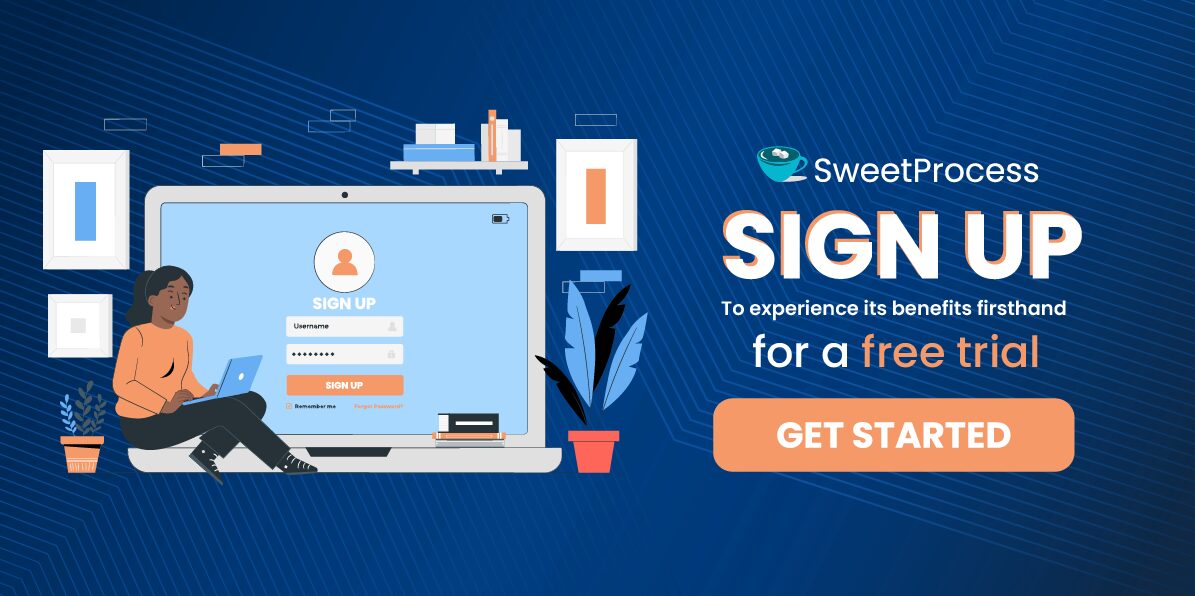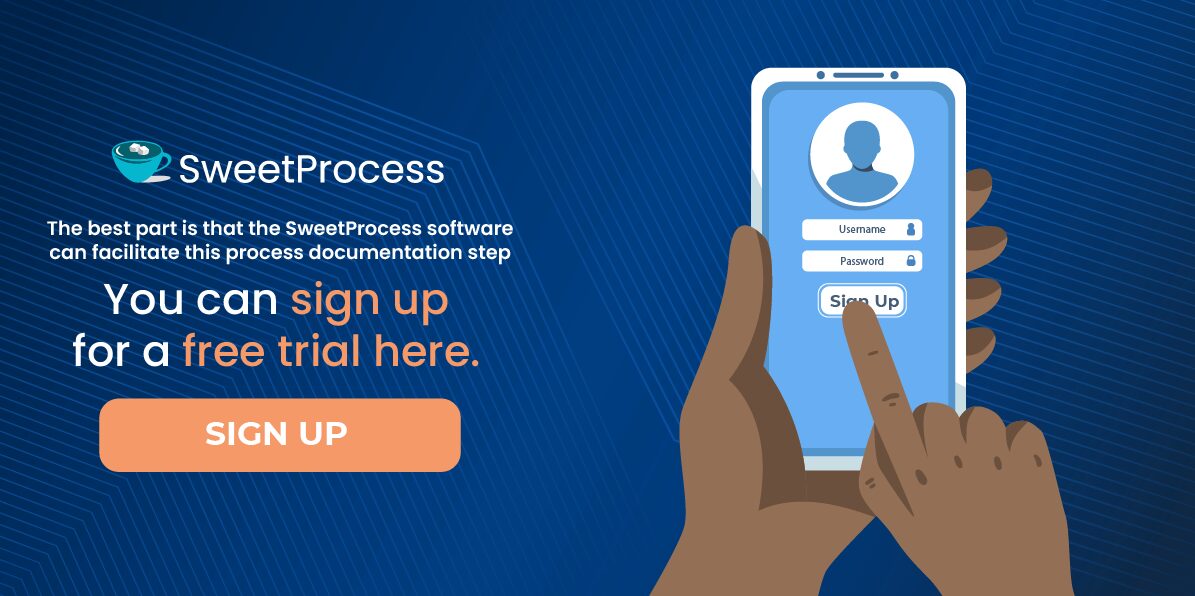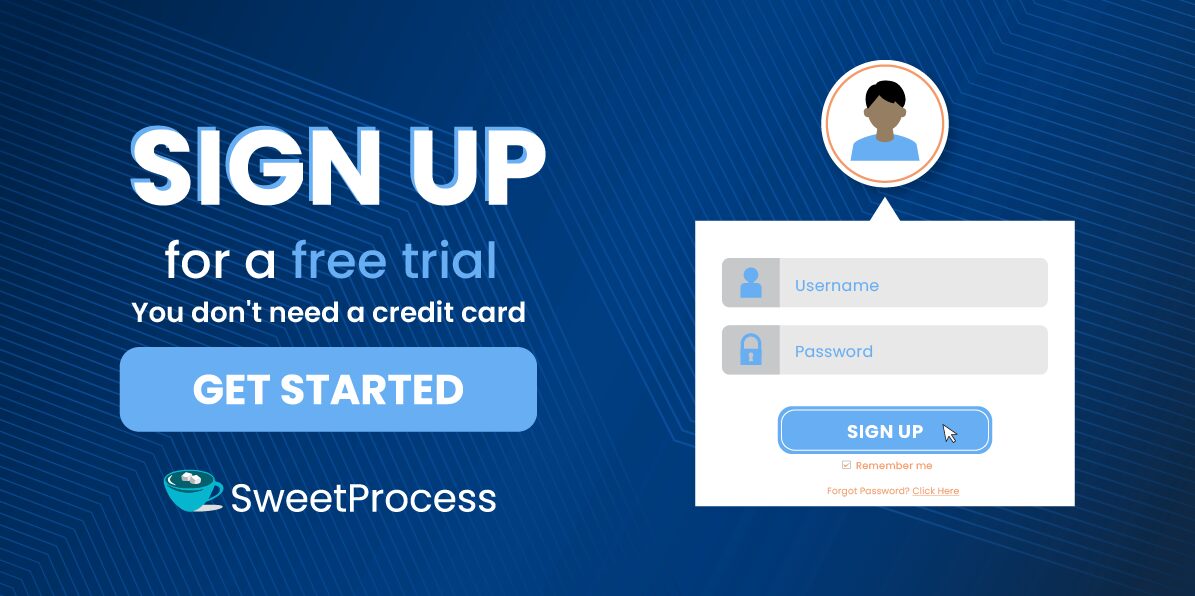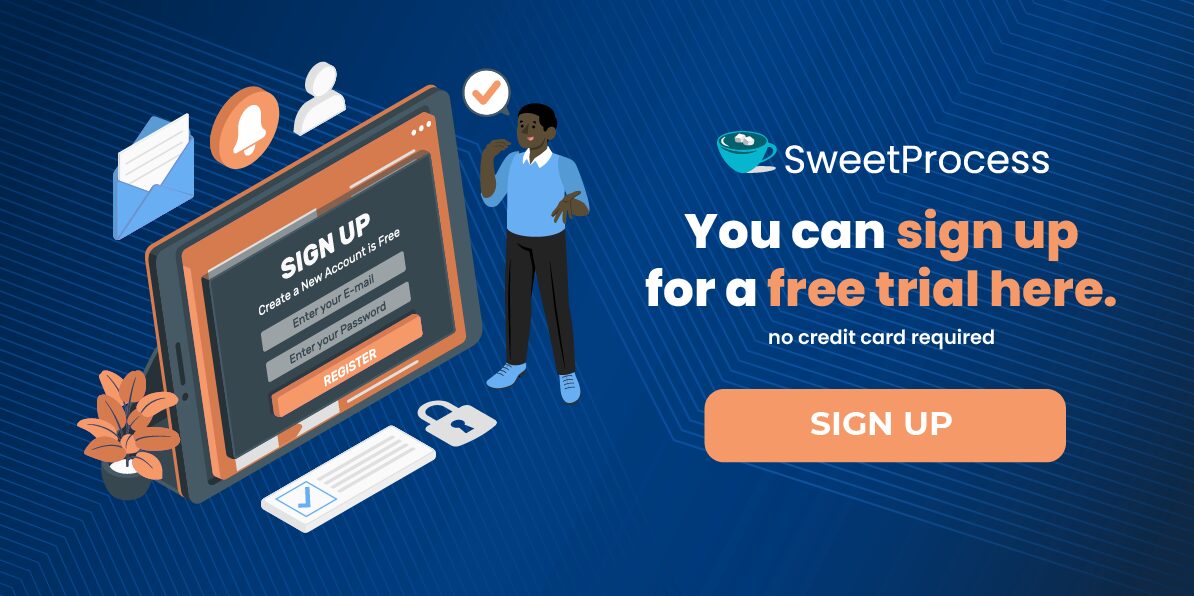Last Updated on February 24, 2025 by Owen McGab Enaohwo
![How to Create an Offboarding Checklist When Employees Leave [+Tips]](https://www.sweetprocess.com/wp-content/uploads/2024/07/offboarding-checklist.jpg)
No matter how long an employee works for you, they will eventually move on, whether leaving the organization entirely or transitioning to a new role. In either scenario, departing employees must undergo a structured offboarding process to facilitate a seamless transition and ensure the success of the organization.
Employing resources such as an offboarding checklist can significantly contribute to the effectiveness of this process. This article comprehensively covers everything you need to know and offers guidance on creating a practical employee offboarding checklist.
SweetProcess is instrumental in automating and streamlining the offboarding process. To experience its benefits firsthand, you can sign up for a free trial here.
Table of Contents
What Is an Offboarding Checklist?
How to Offboard Outgoing Employees: An 11-Step Checklist to Ensure Smooth Exits
How to Offboard Outgoing Employees Seamlessly Using SweetProcess
Why You Should Create an Offboarding Checklist for Exiting Employees
Best Practices When Offboarding Outgoing Employees
Common Mistakes to Avoid When Creating an Offboarding Checklist for Your Organization
Employee Offboarding Examples From Which You Can Learn
Offboard Your Outgoing Employees Seamlessly With SweetProcess
Frequently Asked Questions (FAQs) About Offboarding Checklists
What Is an Offboarding Checklist?
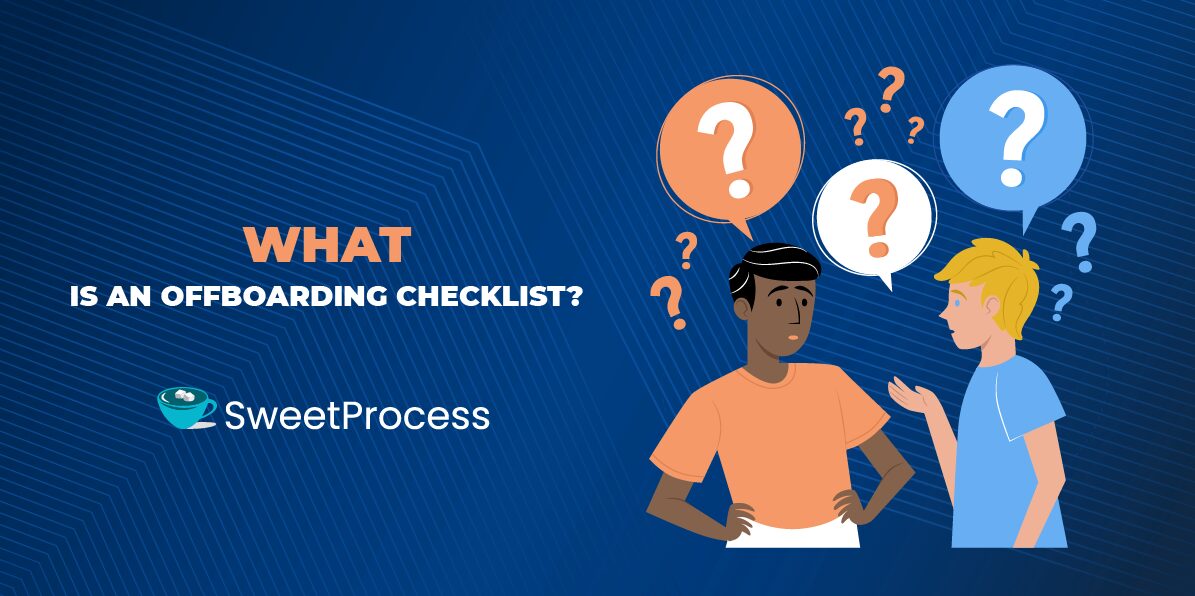
An offboarding checklist lists tasks a company uses to transition employees from the establishment and outlines the necessary steps to complete when an employee departs.
Typically, the offboarding checklist comprises multiple sub-lists, often with checkboxes to denote completed and pending tasks. This includes various administrative tasks such as returning the company’s properties, revoking access to company systems, completing final paperwork, and conducting exit interviews.
How to Offboard Outgoing Employees: An 11-Step Checklist to Ensure Smooth Exits
1) Accept the resignation letter and communicate the offboarding process
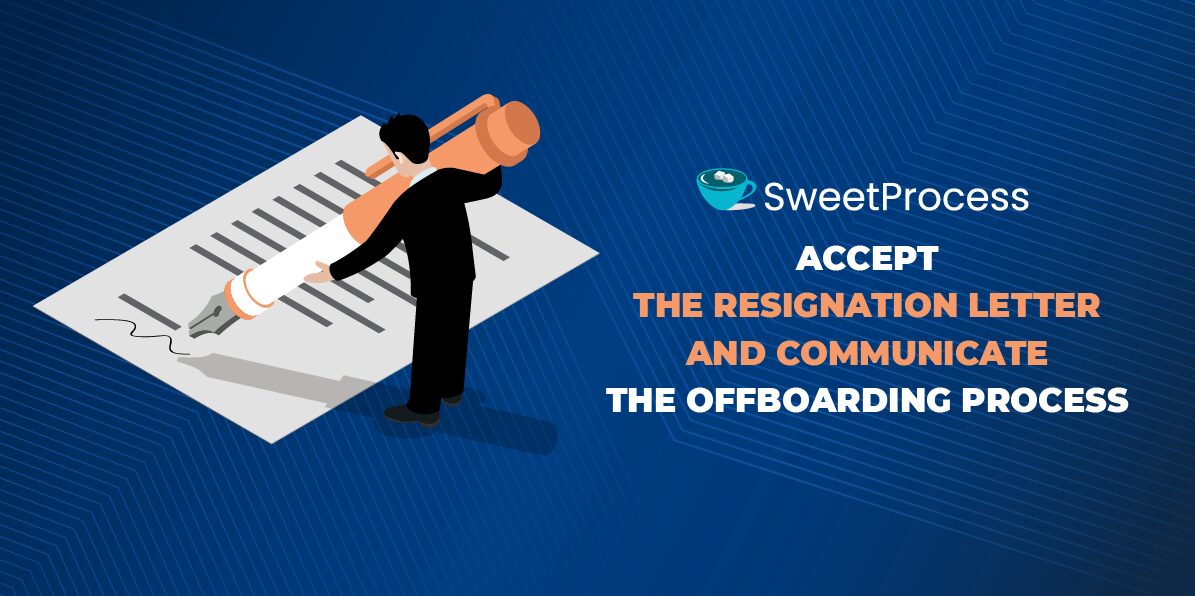
The first step of your offboarding checklist is acknowledging the resignation letter and communicating the offboarding process.
When an employee submits a resignation letter, it is formal notice of their decision to depart. In return, employers issue a formal acknowledgement.
Upon establishing this correspondence, commence the offboarding process by outlining the steps and expectations. Here, you provide the departing worker with an offboarding checklist and any relevant documentation or forms.
2) Provide exit documentation
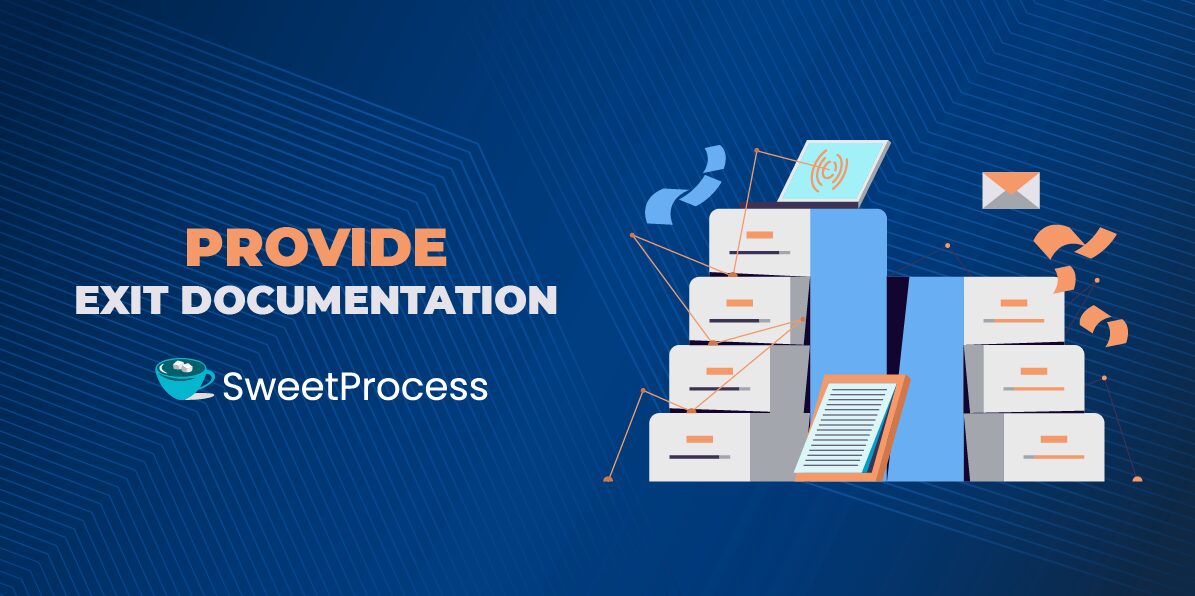
Next, gather all necessary paperwork for the company from the departing employee for future reference.
The documentation may include termination letters outlining the details of their departure, final pay statements, employee feedback questionnaires, and information about benefits continuation.
Furthermore, the documentation may contain reminders about the employee’s obligations regarding protecting confidential company information, intellectual property, and compliance with non-disclosure agreements.
Notably, this exit documentation helps ensure the company complies with legal and regulatory requirements regarding employment termination.
3) Communicate employee exit to team members and the entire company
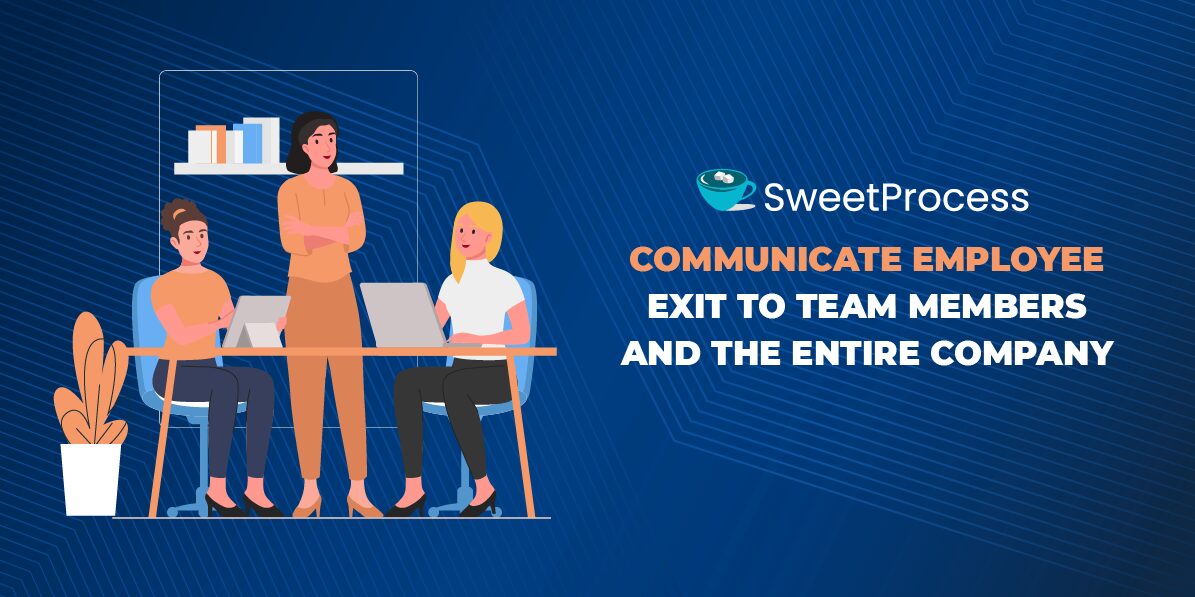
Now that the offboarding process has commenced and you’re gathering essential documentation, it’s time to inform team members. This communication is essential for maintaining transparency and managing expectations.
Reassure team members that plans are in place to manage the transition effectively. Also, provide any relevant information about interim arrangements or plans for hiring a replacement.
4) Facilitate knowledge transfer to the successor
When an employee leaves a position, you want to ensure continuity and minimize disruptions. Therefore, facilitating knowledge transfer to the successor is critical in employee offboarding. This is especially true when the departing employee holds valuable knowledge and experience.
In this step, identify key institutional knowledge areas, skills, processes, tools, and systems that the successor may need to be familiar with for the role. Accordingly, encourage the departing employee to document their processes and procedures, including workflows, best practices, and troubleshooting tips to ease your succession planning.
The best part is that the SweetProcess software can facilitate this process documentation step. You can sign up for a free trial here.
5) Recover the company’s assets and property
The next step in your employee offboarding checklist is recovering the company’s assets and property. This step is essential to protect the organization’s interests and maintain inventory accuracy.
First, maintain a comprehensive list of all company property assigned to the employee, including badges, access keys, electronic gadgets like laptops and tablets, and other equipment. Then schedule a return date.
6) Deactivate accounts and revoke access
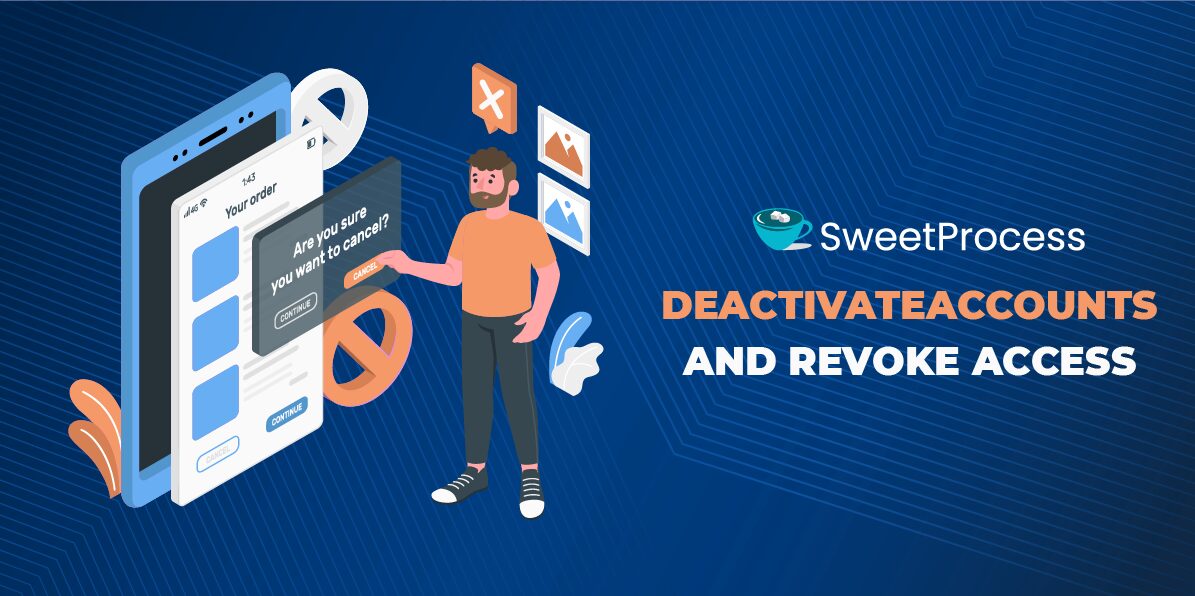
Your next checkpoint involves deactivating accounts and revoking access to safeguard company data. You want to ensure that an outgoing employee no longer has unauthorized access to sensitive information.
A study by Beyond Identity reveals that around 25% of employees retain access to their previous workplace’s accounts and emails. Even more concerning, the report indicates that over 41% of these employees confessed to sharing their former workplace logins.
7) Arrange final payments and benefits
With the employee cut off from the company’s system, your next action is to generate the departing employee’s final paycheck, including additional compensation. This step is vital in the offboarding process to ensure that departing employees receive outstanding compensations and benefits owed to them.
8) Hold an exit interview
Conducting an exit interview is a valuable opportunity to gather feedback from departing employees to understand their reasons for leaving. Moreover, it helps identify opportunities for improvement within the organization.
9) Thank the exiting employees
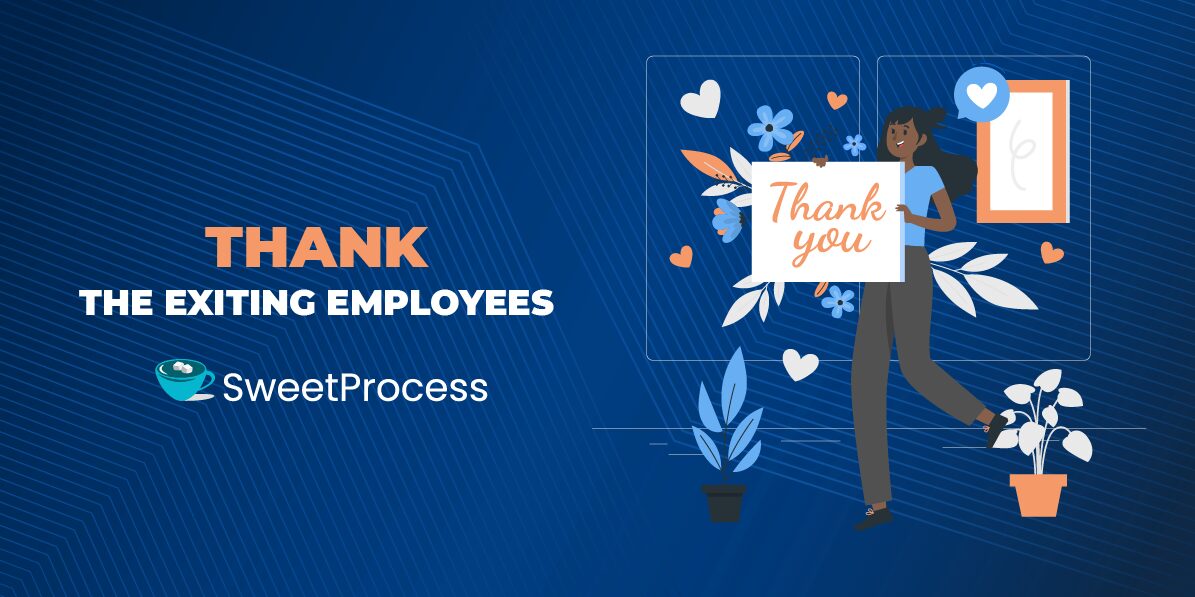
Furthermore, make a note to show appreciation to exiting employees. Express sincere gratitude for their contributions to the organization. Also, acknowledge their achievements and impact on projects and the organization’s overall success.
This represents a professional courtesy and a way to maintain positive relationships, leaving the door open for future collaborations.
10) Update your organizational chart and company directory
With the employee on their way out, the next step is to update the organizational chart and company directory to maintain accurate records.
Remove the leaving employee’s name, position, and any related information from the organizational directory.
Additionally, the changes that must be made to the organizational chart due to the employee’s departure must be identified.
11) Stay in touch with former employees
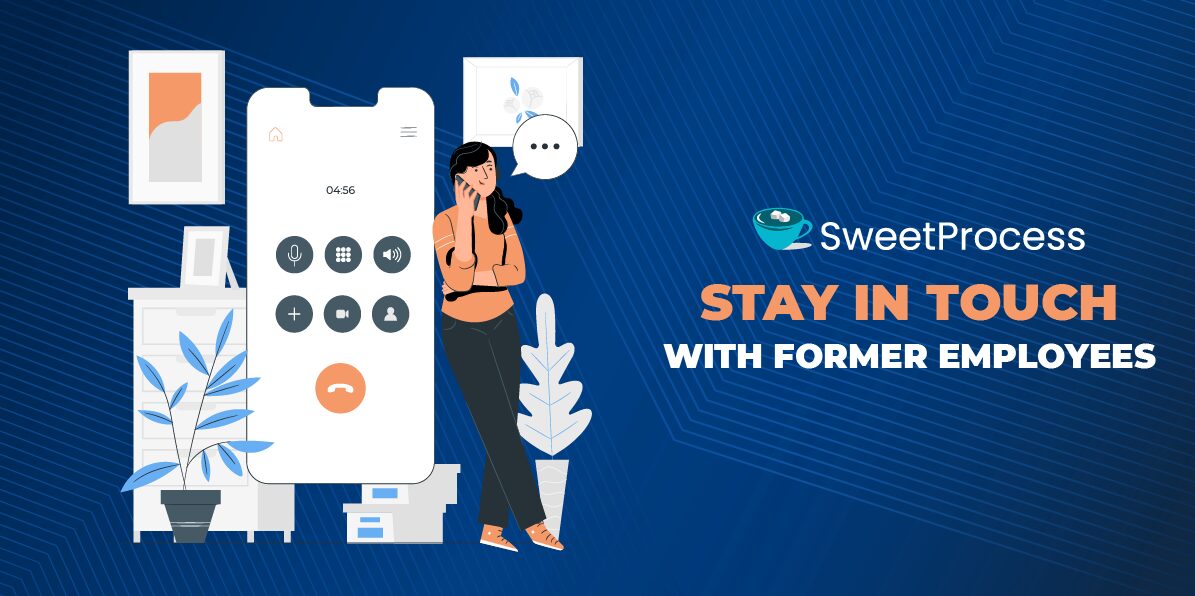
The final point of your employee offboarding checklist is a note to stay in touch with former employees. This gesture can be beneficial for maintaining professional relationships and networking opportunities.
You can stay in touch by establishing an alumni association or exploring opportunities for collaboration on projects that align with the former employee’s interests.
For instance, French food service firm Sodexo operates a branded alumni network called Reconnexions, housed within their talent acquisition division. Employees receive an email invitation to join the network within 30 days of leaving the company.
How to Offboard Outgoing Employees Seamlessly Using SweetProcess
With your 11-step checklist established, it’s time to explore ways to streamline the offboarding process. Leveraging software platforms like SweetProcess is critical here, especially in documentation.
Avoid tribal knowledge by documenting your company’s procedures, processes, and policies
Tribal knowledge refers to undocumented information that only certain people in a company know. Departing employees carry away valuable skills and knowledge. Undocumented knowledge creates a gap that impedes workflow efficiency, with successors struggling to familiarize themselves with tasks.
Here is how to document your company’s processes, procedures, and policies with SweetProcess to mitigate the negative impact of tribal knowledge.
First, sign up for a free trial. Upon sign-up, one of the first pages you’ll encounter will urge you to document your company’s processes. You can import existing procedures via Microsoft Word or have one written for you by SweetProcess’s AI tool.
Input your business keywords in the search bar for SweetProcess AI to suggest policies and procedures you may need to document.
For this example, an online shopping business may need to document policies and procedures such as return and refund, customer service response, and product delivery tracking.
However, in an offboarding process, you may need to document procedures such as the exit interview process, equipment return guidelines, and data security post-employment.
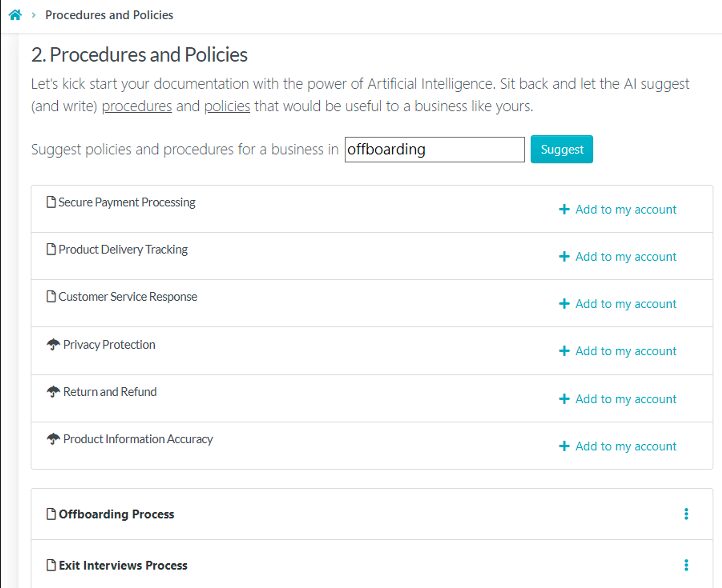
Click “Add to my account” in any of the suggested procedures. The added procedures will be saved as an editable draft, which you’ll find in separate rows below other outlined suggestions.
Click “Exit Interview Process” to see the drafted step lists for conducting an exit interview. You can modify the suggested steps to suit your company’s values. When satisfied with the documented steps, approve the procedures to go live and be accessible to your teams.
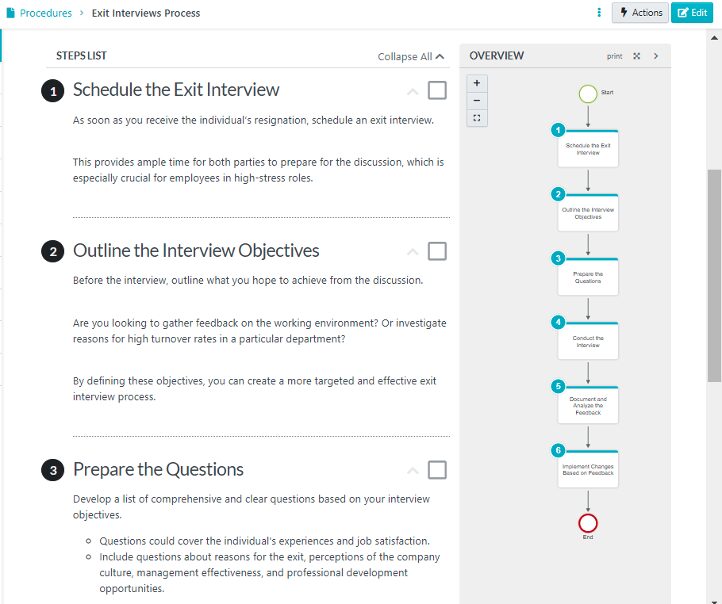
Essentially, by documenting the steps for your business processes using SweetProcess, you ensure that critical knowledge is preserved.
Therefore, with a separating employee, you’ll have less to worry about as the successor takes on the task as expected.
Peter Nelson, president of Marc Nelson Oil Products, Inc., once had it tough with undocumented processes. He remarked in an interview with SweetProcess:
“I have some people here that have been here longer than twenty years, so they really know the business, and not everything is written down. It isn’t written down in a precise, clearly defined manner, and so when somebody leaves, it’s painful.”
However, Nelson solved this pain point using SweetProcess. Find out how by signing up for a 14-day free trial here.
Create an effective offboarding checklist that’s easy to follow
Now, let’s use SweetProcess to create a practical checklist to offboard outgoing employees. The fastest way is to use the editable checklist templates. that SweetProcess provides, which contain 18 steps. Alternatively, you can create an “Employee Offboarding Checklist” procedure from scratch.
While logged in to the website, from the “More” tab on the homepage, click on “Procedures.” On the next page, you’ll find the button to “Create Procedure.”

After clicking, the next page prompts you to enter the title of your procedure and whether to write it using AI suggestions, which you can later modify. Your offboarding checklist will look similar to the illustration below.
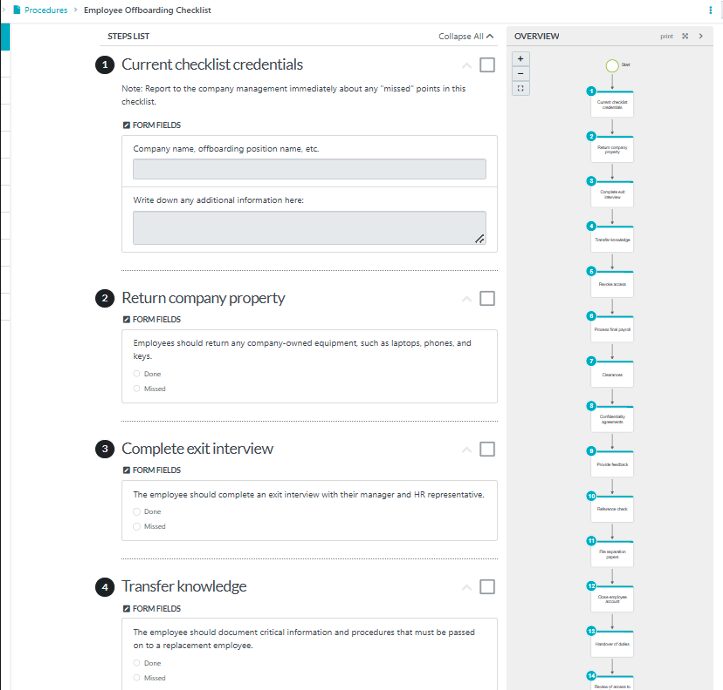
Close the knowledge gap within your company quickly and easily
The knowledge gap departing employees form can be closed quickly and easily with SweetProcess by leveraging its capabilities to document, standardize, and share knowledge effectively.
SweetProcess is a robust knowledge management system designed to construct knowledge bases.
Its internal knowledge base software promotes a level playing field in the workplace by decentralizing information that would typically be accessible only to select individuals.
Jacob Syrytsia, CEO of AEJuice, a video marketing agency, is among the entrepreneurs who have enhanced their business operations by leveraging SweetProcess to build a knowledge base. After implementing SweetProcess, Jacob experienced the freedom to take a vacation for the first time, confident that his employees could access necessary information from the knowledge base.
“For every department, we have a separate knowledge base, and there’s a manager for each department. Either the manager or I keep it up to date. Whenever someone asks, ‘How do I use this tool?’ I just send them a link, and it saves me about an hour of explaining.”
Manage your team’s knowledge in one place
Creating a knowledge base for your employees involves a few steps. While logged in, from the homepage bar, navigate to the “More” tab to find “Knowledge Bases.” From the page that opens after clicking, you’ll find the button to create a knowledge base.

Enter the title of the knowledge base and click on “Continue.”

Notably, you can make this knowledge base internal only for employees or externally for customers. You can make this choice using the “Control Access” menu while customizing the knowledge base to suit your brand.
Now, scroll to the bottom of the page to create various categories of help sections for your employees.

Creating a category for documentation:

Click “Add New Article” and select from the dropdown. The displayed options are your existing procedures.


Revoke outgoing employee’s access to the company’s internal documents
While most information in a company knowledge base is intended for all team members, certain items could be kept confidential.
SweetProcess provides companies with administrative access controls to manage which documents teammates can access. Manny Cosme, president and CEO of CFO Services Group, has used the tool effectively for his business, as he remarked:
“Being able to give people specific access to certain information was not only helpful to them but also to me as a business owner to protect my proprietary information. No one has access to the entire piece of the puzzle other than me.”
Why You Should Create an Offboarding Checklist for Exiting Employees
Creating an offboarding checklist for exiting employees is crucial to preventing oversights that may harm your establishment.
Keep intellectual property within your organization
An offboarding checklist helps ensure that departing employees return all company-owned devices, documents, and other materials containing sensitive information or intellectual property before leaving.
Without a structured offboarding process, departing employees may inadvertently or intentionally take confidential information when leaving.
According to CyberArk, a staggering 88% of information technology workers admit they would take sensitive data with them if they were terminated from their positions.
Transfer exiting employees’ essential knowledge
Research on the cost of employee turnover indicates that it typically takes eight to twelve weeks to replace a knowledge worker once they leave. Moreover, upon the arrival of a new employee, it can take an additional four to eight weeks, at the very least, for them to become fully trained, acclimated, and productive in their new role.
This timeline may expand without appropriate knowledge transfer. Therefore, your company must make concerted efforts to preserve critical information from departing employees for successors.
Prevent legal and security problems
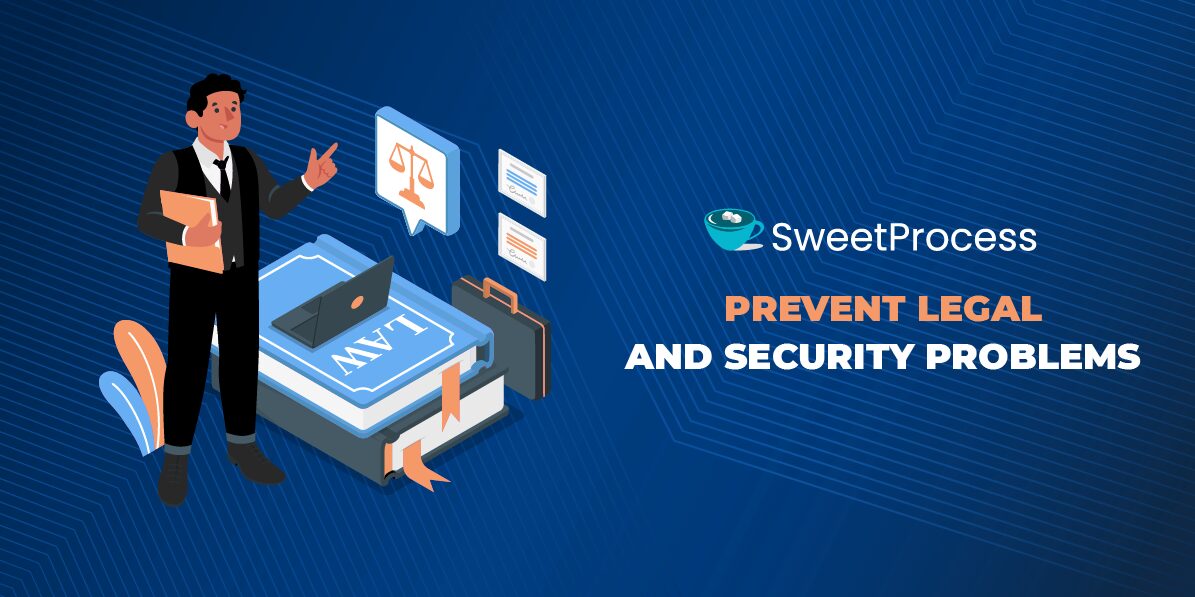
A record of offboarding activities serves as documentation that the organization followed proper procedures in handling an employee’s departure. By following an offboarding checklist, your organization minimizes the likelihood of compliance violations and legal disputes when offboarding employees.
Maintain ongoing relationships with departing employees
Even after they’ve left your company, your former employees remain significant assets. They can evolve into advocates for your brand or trusted referees.
How you handle the offboarding process significantly influences whether they become advocates or adversaries.
Make improvements based on feedback from outgoing employees
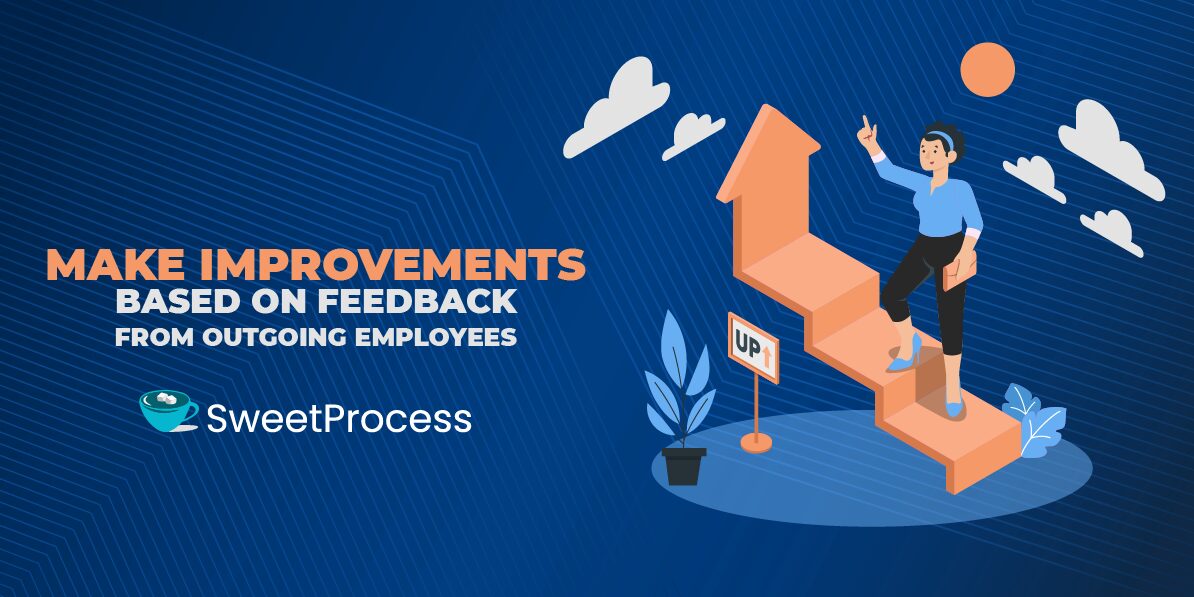
An offboarding checklist provides an opportunity to collect feedback, valuable insights, and suggestions for improvement. This process opens a channel to obtain crucial information to help identify areas for enhancement within your company.
Get useful information about your company
Furthermore, feedback collected from departing employees lets you pinpoint common patterns, trends, or recurring issues within your company. For example, employees exiting at various stages may share similar complaints regarding the company culture.
This insight can inform targeted improvements and initiatives to enhance overall organizational effectiveness.
Make employees leave with a positive feeling
As the popular saying goes, people may forget what you said or did, but they will never forget how you made them feel.
According to a Gallup study, employees with a positive exit experience are 2.9 times more likely to recommend their organizations to others.
When employees understand what to expect and how the process will unfold, they feel valued and respected, leading to a more positive departure experience.
Best Practices When Offboarding Outgoing Employees
Keep your offboarding checklist updated
As the organization evolves, the offboarding process may need to adapt to meet changing needs and circumstances. An updated checklist allows you to incorporate new steps, procedures, or best practices that reflect the current state of the organization and industry standards.
Designate an offboarding personnel
Designated offboarding personnel ensure that there is a clear point of contact responsible for overseeing the offboarding process. This streamlines communication and coordination, making managing the various tasks involved in offboarding departing employees easier.
Give them a memorable goodbye
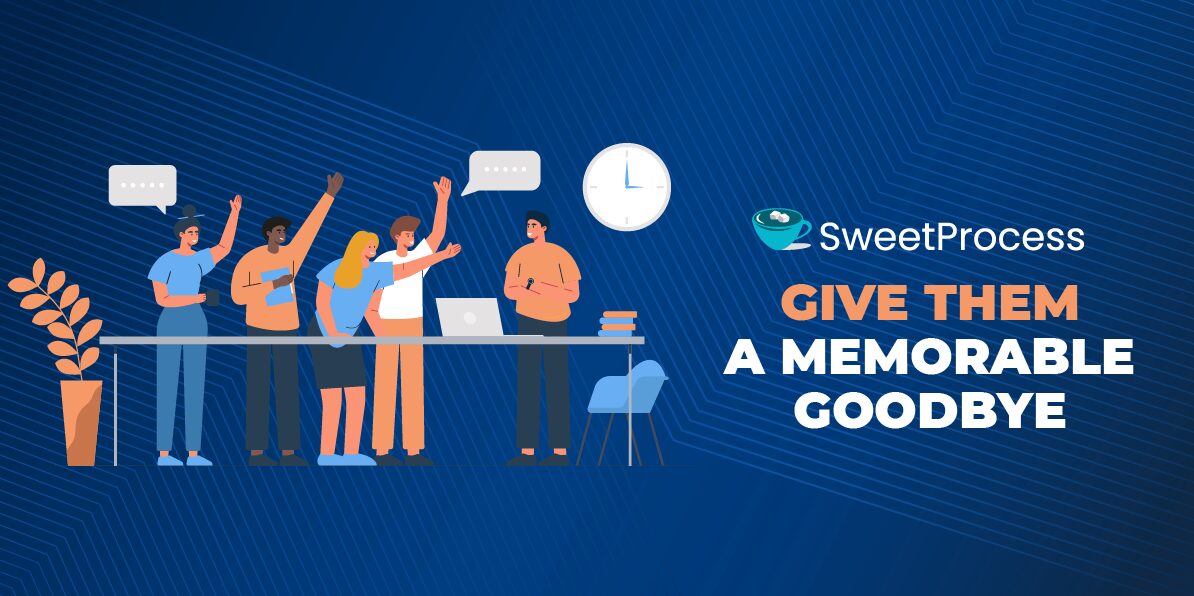
Giving departing employees a memorable goodbye is a meaningful way to show appreciation even at the end of their contributions.
In Japan, when someone leaves a company, they are typically invited to a soubetsukai, a meticulously organized farewell party. During these gatherings, the entire team comes together to share a meal, reminisce about memorable moments, extend well wishes to the departing employee, and present them with a farewell gift.
Be clear about non-disclosure and non-compete agreements
Ensure departing employees are provided copies of non-disclosure agreements (NDAs) to protect the company’s intellectual property and competitive interests. Review the terms of these agreements with the departing employee to ensure they understand their obligations and restrictions.
In 2018, Uber settled a legal dispute with Google’s Waymo self-driving unit by paying $245 million worth of its shares. The lawsuit arose from allegations that a former Waymo engineer, who later became a key figure in Uber’s self-driving project, had taken thousands of confidential documents with him.
Organize departure requirements
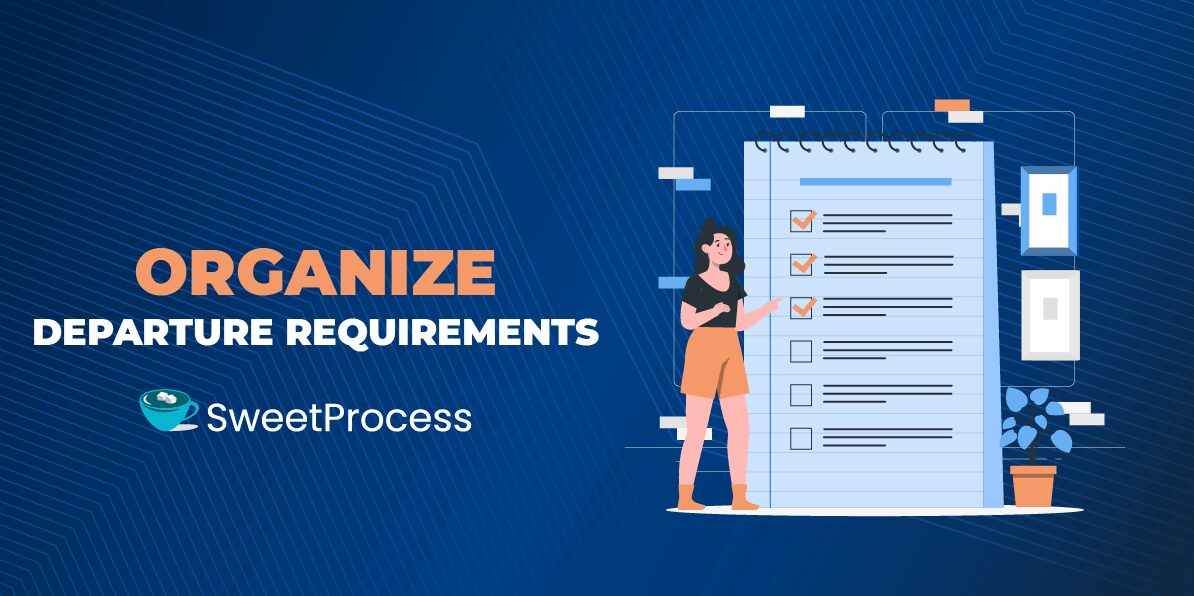
Develop a checklist that outlines all the tasks and requirements that departing employees must complete before their last day. This may include returning company property, completing documentation, transferring knowledge, and relinquishing access to the company system.
Address employees’ personal needs
Also, during the offboarding process, make a note to address the departing employees’ personal needs, if any. This demonstrates empathy, respect, and support for departing employees during a significant life transition.
Conduct an exit interview
For departing employees, the exit interview serves as a final opportunity to express their thoughts, feelings, and concerns about their time with the organization. Skipping the exit interview can leave departing employees feeling unheard or undervalued.
Emphatically, an exit interview provides an avenue to probe for specific details to better understand the departing employee’s experiences.
Common Mistakes to Avoid When Creating an Offboarding Checklist for Your Organization
Ignoring paperwork
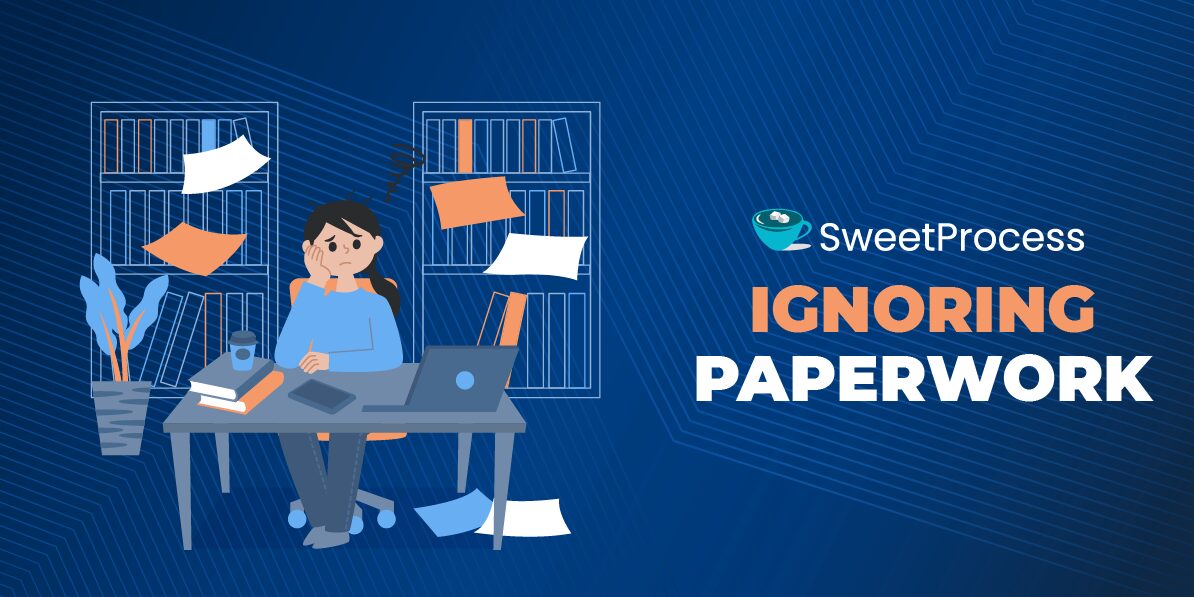
Ignoring paperwork when creating an offboarding checklist can lead to several challenges and oversights in the process. This may result in incomplete documentation of the employee’s departure, which can have potential compliance consequences.
Not creating an offboarding checklist for remote employees
Overlooking the need for an offboarding checklist for individuals outside of traditional office settings can prove to be a costly oversight.
Consider the scenario where improper offboarding allows remote workers to retain access to sensitive records.
Lacking empathy
Lacking empathy in the offboarding process can hurt departing employees and the organization’s overall reputation. Offboarding is not just about completing tasks; it’s also an opportunity to maintain positive relationships with departing employees.
Skipping the exit interview
Several years ago, a finance firm hired a manager to supervise a team of 17 employees. Within a year, the team dwindled to eight members, with four resignations.
Interestingly, as reported by Harvard Business Review, all departing employees expressed the same sentiment during their exit interviews. They alleged the manager lacked crucial leadership skills, such as effectively communicating vision and strategy.
Essentially, these exit interviews uncovered a deeper, systemic issue. Without conducting formal exit interviews, the company would have been oblivious to the reasons for the consistent departures.
Not having a knowledge transfer process in place
Without a knowledge transfer process, key employees’ departures can disrupt ongoing projects, workflows, and operations. Other team members may need help to fill the gaps left by departing employees, leading to delays and inefficiencies.
Employee Offboarding Examples From Which You Can Learn
Parker Drilling previously relied on a paper-based offboarding process involving significant manual administrative work. However, transitioning to a fully automated offboarding service saved the business 72 hours.
Moreover, the time required to revoke systems access for departing employees dropped from 100 to 31 hours.
Similarly, a Fortune 500 company operating in the medical field recognized the necessity of enhancing its employee offboarding process to eliminate delays. To achieve this, the company implemented an automated software solution. This resulted in a seamless documentation process, enhanced data security, and improved employee communication.
Meanwhile, Seema Nayak, content marketing manager at AdChina.io, reflected on a frustrating departure from a previous employer. She was left hanging during her exit checklist as the HR representative abruptly left. Furthermore, the HR team reportedly deleted the company’s LinkedIn recommendations for her, which Seema found unprofessional.
Offboard Your Outgoing Employees Seamlessly With SweetProcess
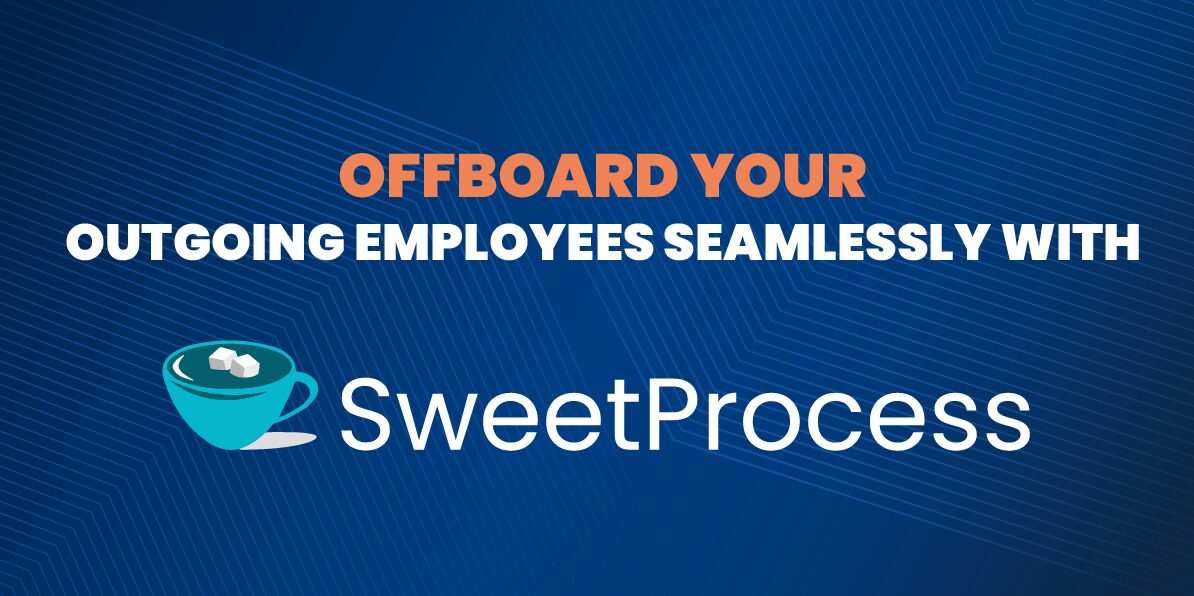
Every month, thousands of individuals bid farewell to their jobs. Before an employee departs, business owners may have to ponder for the last time: What company information is leaving with them?
However, you’ll have less to worry about when you adopt a comprehensive task and process management software like SweetProcess.
While it can be challenging to keep track of items to retrieve from the exiting employee, documents to review with them, and questions to ask during the exit interview, SweetProcess provides a solution for this need.
SweetProcess leverages Standard Operating Procedures (SOPs) to establish workflows for businesses and employees. It streamlines the offboarding process through automation, especially in documentation.
Documentation ensures seamless transitions, even when someone new is tasked with conducting the offboarding process. Marc Nelson Oil Products solved its problem of retaining skilled employees by documenting its business processes with SweetProcess.
Hear from Adi Klevit, a business consultant to Marc Nelson Oil Products:
“What I saw was the need to have documentation in place because there was a turnover. There was also a problem in terms of communication, and cross-training was also a big problem. All those were problems that could have been remedied very easily with having well-documented processes and procedures.”
Klevit, the CEO of Business Success Consulting Group, concluded by saying:
“During my search for process documentation software, I discovered SweetProcess. Though I explored other options, I found SweetProcess to be the most intuitive and effective solution.”
Sign up for a free trial to gain a similar experience with your documentation journey for your employees.
Meanwhile, the beauty of SweetProcess extends beyond enhancing offboarding; it also streamlines the employee onboarding process and training. For instance, The Life Coach School successfully leveraged the SweetProcess platform to enhance its employee training processes.
Employees could simply follow the documented training processes on SweetProcess, enabling self-guided training. In the words of Kimberly Job, the executive director of customer support at The Life Coach School:
“Video processes were helpful because the information was repeatable without managers having to repeat instructions to employees over and over. The fact that they can look up everything they need to do has saved us a lot of time communicating during the training process.”
You can begin streamlining and documenting your offboarding processes with SweetProcess by signing up for a 14-day free trial with no credit card required.
Frequently Asked Questions (FAQs) About Offboarding Checklists
Who is responsible for employee offboarding?
The responsibility for employee offboarding typically falls within the purview of the Human Resources (HR) department. Meanwhile, it may involve collaboration with the departing employee’s manager and the IT departments to revoke access to company systems.
Why should HR leaders care about offboarding?
Offboarding is the final impression an employee has about the organization. HR leaders must care about offboarding for reasons related to employee experience, brand reputation, knowledge transfers, compliance, and legal risk.
What is one of the key parts of a successful offboarding?
Effective communication from both ends is a key part of a successful offboarding process. It includes communicating expectations, timelines, procedures, and any necessary information related to the offboarding process.
